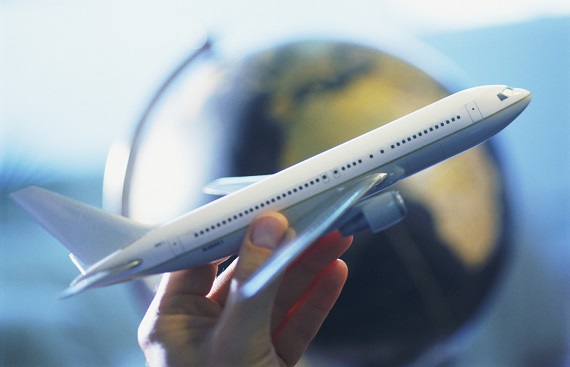Analyzing the Airlines Industry of India

The civil aviation industry in India has emerged as one of the fastest-growing industries. India has become the third-largest domestic aviation market globally and will likely overtake the UK to become the third-largest air passenger market by 2024. Well, Covid-19 impacted Indian aviation quite roughly, and the onset of Omicron had exacerbated the situation.
India’s short aviation history, which is from the 1950s, has begun with the birth of Air India and Indian Airlines, the two publicly-owned and -run carriers. Once the industry had welcomed private scheduled operators and airlines such as Damania, East West, ModiLuft, and Jet Airways took to the skies. The years 2005 to 2014 saw heady growth in the number of air travelers within India and overseas. From 2014 to 2019, traffic growth remained steady, and the total number of aircraft operated by the Indian carriers crossed 700 by the end of 2019.
From 2020, every industry has faced various consequences due to the pandemic. So does the Indian aviation industry. It dealt a lethal blow to these glorious 15-odd years. In March 2020, traffic hit a standstill. The net effect can be seen in the drop of aircraft registered with the Director-General of Civil Aviation (DGCA): On December 22, 2021, it was 658 in total. Additionally, the number in use was lower at 506, indicative at least partly of the sharp knock to demand.
It led to the termination of employees, sending them on leave without pay, or cutting their salaries. The government also had to extend the deadline for submitting bids for Air India five times during the year. Around 10 percent of the jobs in the Indian aviation sector were lost between April 2020 and December 2021 to the COVID-19 pandemic, as per Minister of State for Civil Aviation.
Optimistic age of Indian Aviation Industry
![]()
The post-pandemic period is a little optimistic. After the sale of Air India that experts, analysts, and those vested in the industry saw the next wave happening. Government and industry sources estimate that by 2028-30, the total Indian fleet will cross 1,000 aircraft, but airlines' cocktail and composition are likely to be altered.
As India's restrictions on international flights lift, many national and international airlines are ready to resume operations between India and other countries. Lately, many popular airlines, such as SpiceJet, Indigo, Akasa Air, Finnair, to name a few, have announced to launch of new flights.
SpiceJet has introduced seven new flights under the regional connectivity scheme UDAN including Gorakhpur-Varanasi. Both Gorakhpur and Varanasi are famous religious and tourist destinations in Uttar Pradesh. The airline will be operating its Boeing 737 and Q400 aircraft on these routes. Additionally, the Gorakhpur-Varanasi-Gorakhpur UDAN flight, the airline has rolled out flights on the Hyderabad-Puducherry-Hyderabad, Varanasi-Kanpur-Varanasi, and Varanasi-Patna segments under the regional connectivity scheme. The airline has also introduced eight industry-first flights, including Jaipur-Dharamshala and Tirupati-Shirdi sectors. The urge to explore the religious places would raise the business.
India's newest budget airline Akasa Air planned to launch its first commercial flight in June. The airline's chief executive Vijay Dube said they were working with the Ministry of Civil Aviation (MoCA) and Directorate General of Civil Aviation (DGCA) to get the required clearances for commencing the air operations. The airline intends to have 18 aircraft within 12 months from launch and add 12-14 a year later. In November last year, Akasa Air placed an order for 72 Boeing 737 MAX jets.
Finland's flag carrier Finnair has also announced that it would connect Helsinki with India's financial capital Mumbai with a direct flight, starting July this year. Mumbai would be the airline's second destination in India after Delhi, where it has been flying since 2006. The to-be-launched flight on Mumbai-Helsinki and vice versa will be open for bookings from April 5 onwards. It would strengthen economic ties between India and Europe, and the launch of a new route signifies the region's growing importance. Finnair connects customers to almost 70 destinations in Europe and five destinations in the US, including Seattle, New York, Chicago, Dallas, and Los Angeles.
Thai Airways, the national carrier for Thailand, is likely to resume operations between the two countries. A popular destination for Indian travelers, VFS Global expects a surge in demand for its e-Visa on Arrival service for Thailand.
Anticipated Trends
![]()
As per the US-based aerospace company, Boeing has developed a comprehensive 10-year roadmap for the Centre-run Airports Authority of India (AAI) to modernize its air traffic management. "The roadmap aims to drive operational excellence and offer enhanced air traffic capacity for our flying public, and improved navigation, communication and surveillance for our users, making Indian skies seamless and safer to operate in," AAI Chairman Sanjeev Kumar stated. In 2019, Boeing and the AAI signed an agreement to develop the roadmap jointly.
"This is a proud moment for us at Boeing as we develop and present a comprehensive roadmap to AAI to be leveraged as national guidance in helping improve airspace utilisation, and maintain safe and efficient aircraft operations," Ahmed Elsherbini, chief engineer, Boeing India, said. (Source: Economics Times)
India’s aviation industry is largely untapped with tremendous growth opportunities, considering that air transport is still expensive for most of the country’s population, of which about 40% is the upwardly mobile middle class.
Hence, some distinct trends can be expected over the next decade. Such as, leading to a clean-up of the sector: more professionalism, more reasonable fares, capacity additions that reflect actual demand, healthier balance sheets, and cash balances, and better governance. In the process, it is argued many less-than-desirable practices will slowly vanish. This would be the most-awaited and desirable development. We live in the hope that India and its airlines might finally grow up economically as well as morally.
